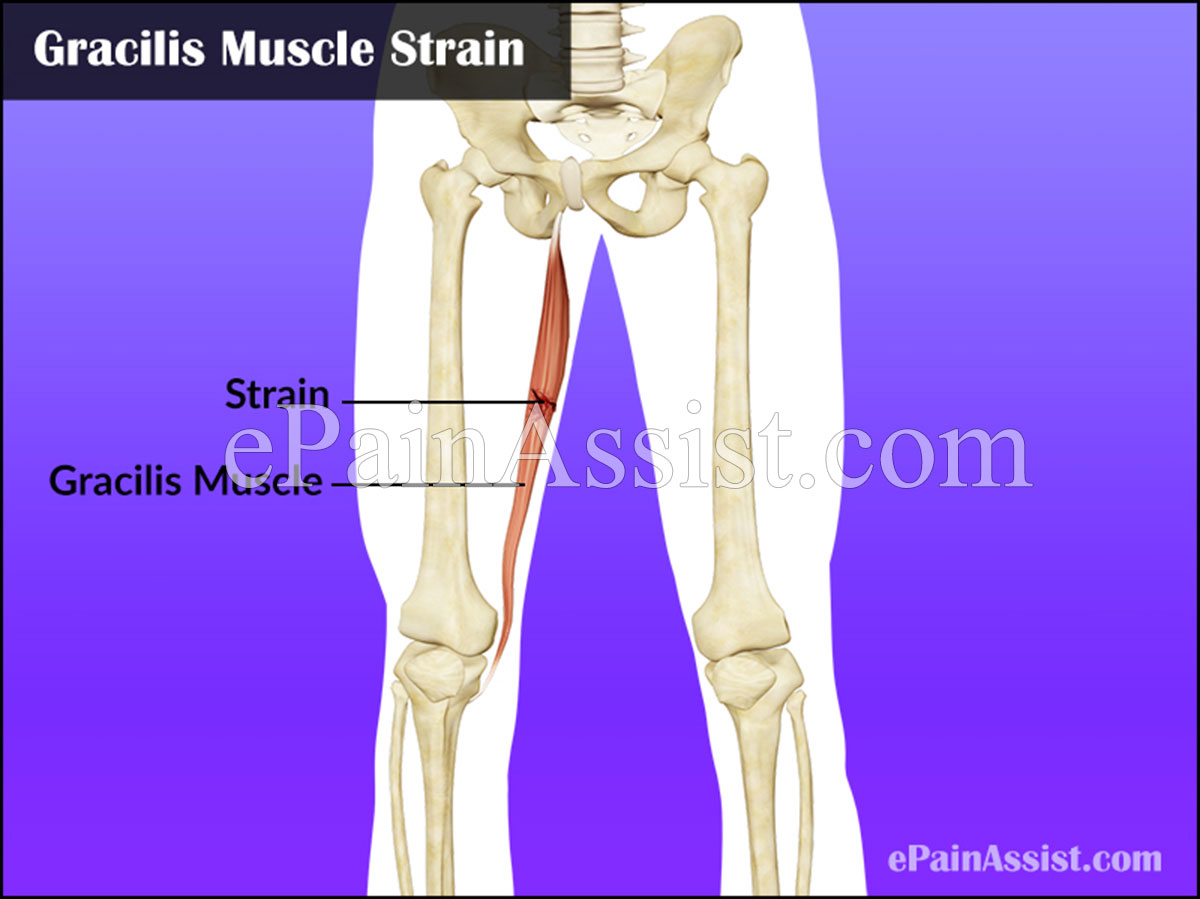What is Gracilis Muscle and What is its Function?
The Gracilis Muscle is found in the groin. This muscle originates from the external point of the pubic bone and goes all the way down the midshaft of the tibia. The main function of the Gracilis Muscle is to facilitate hip adduction and to help with knee flexion. This muscle also assists in knee stabilization and knee rotation. When we talk about hip adduction, there are actually five muscles that are utilized for this purpose which include the pectineus, adductor brevis, adductor longus, adductor magnus, and the gracilis muscle. Gracilis Muscle Strain can be caused due to injury and overuse. The best way of preventing Gracilis Muscle Strain is by stretching the groin regularly. Blood is supplied to the Gracilis Muscle by the obturator artery and is innervated by the obturator nerve.

Signs and Symptoms of Gracilis Muscle Strain
Some of the symptoms pointing towards an injury to the Gracilis Muscle are:
- Stinging and burning pain beneath the skin on the inside of thigh
- This pain is constant and is present even at rest and there is no change in pain with changing positions.
What can Cause Gracilis Muscle Strain?
Some of the activities that may result in Gracilis Muscle Strain are:
- Individual who sit with their legs crossed for a prolonged period of time are prone to injuring and straining the Gracilis Muscle
- People who do horseback riding a lot or stay in hilly areas can also end up with Gracilis Muscle Strain due to this activity
- Frequent and professional skiers tend to injure or strain their Gracilis Muscle frequently
- Slip and fall on the ice may result in Gracilis Muscle Strain.
Risk Factors of Gracilis Muscle Strain
Some of the medical conditions that can be caused due to Gracilis Muscle Strain are:
- Hip joint disease
- Groin strain
- Osteoarthritis
- Pubic Stress Syndrome
- Obturator Nerve Entrapment.
What is the Treatment for Gracilis Muscle Strain?
Below mentioned are some of the methods for treating Gracilis Muscle Strain.
Rest is important to heal a Strained Gracilis Muscle.
NSAIDs such as ibuprofen and naproxen help in decreasing pain and inflammation
Ultrasound can be used to reduce pain and calm down the inflammation.
Cold Therapy: There are many forms of gels and cold packs available in the market and over the counter which can go a long way in helping with treatment of an injured Gracilis Muscle. The gels that are available are normally used immediately after an injury or strain as it immediately cools the area and prevents swelling from developing in the area. It has been proved such gels or coolants have healed injuries to the Gracilis Muscle twice quickly than normal application of ice and the pain relief is more longer lasting. The gel is used by rubbing it in and around the groin and thigh regions for optimum results.
Warm Therapy: This type of therapy can also be used for treating an injured Gracilis Muscle. This gel provides adequate warmth to the injured area without actually burning the area. It works fantastically well in relieving pain and stiffness post an injury to the Gracilis Muscle. This gel needs to be put at the bottom of the foot and rubbed through to the ankle for best results. It should be noted here that warm therapy should never be used when using ice packs or heat packs as this may result in blistering of the skin
Groin Supports: This form of support compresses the Gracilis Muscle area and facilitates early healing of the strain. These supports are provided with adjustable straps for a good fit. This support brace fits high up on the thigh for maximal benefit.
Compression Shorts: These types of shorts also compress the Adductor Magnus Muscle and facilitate early healing of the injured muscle. It also helps in reducing swelling.
Sports massage can be done by a professional. It helps in faster healing.
